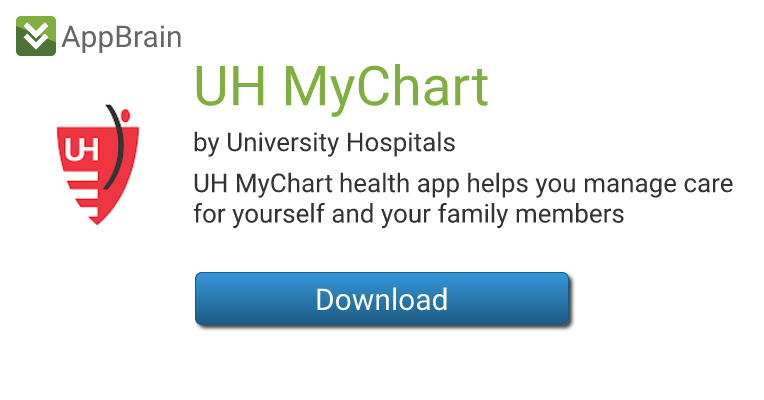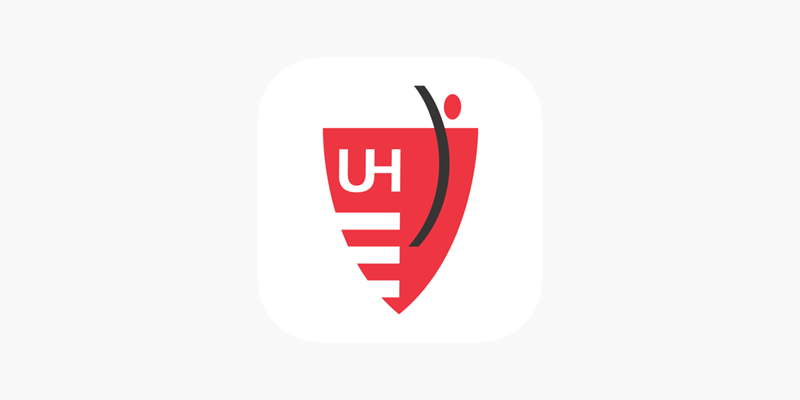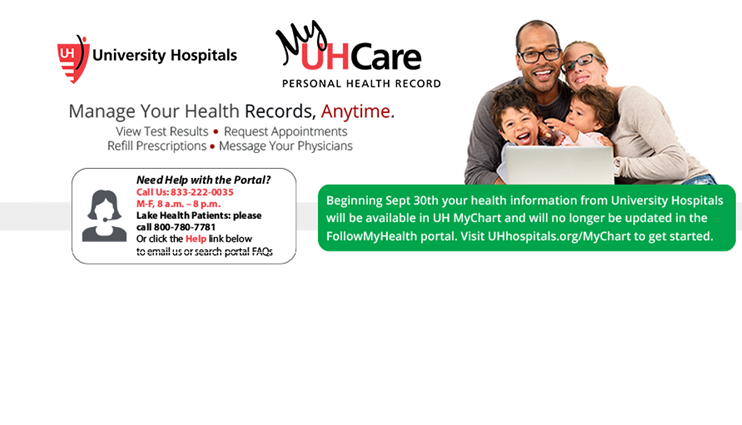University Hospitals transitions patient records to UH MyChart switch to finalize by autumn
University Hospitals, a prominent healthcare provider, is taking a significant step towards digital transformation by transitioning patient records to UH MyChart. This innovative patient portal is designed to provide patients with secure, online access to their health information 24/7 from any location. The transition to UH MyChart is expected to be completed by autumn, paving the way for improved patient convenience and care efficiency.
The switch is part of an ongoing effort to streamline healthcare processes and leverage technology to offer high-quality, patient-centered care. By facilitating easier access to health records, UH MyChart will enable patients to play a more active role in managing their own health. They can view their test results, request prescription refills, schedule appointments, communicate with their healthcare team, and view their health summary — all from the comfort of their homes.
This transition will also promote transparency, accuracy, and timeliness in healthcare delivery. It will reduce paperwork, minimize the risk of data loss, and ensure the secure exchange of health information among authorized users. By embracing this digital solution, University Hospitals is not only enhancing the patient experience but also driving operational excellence, cost-effectiveness, and clinical outcomes.

Transition to UH MyChart
The transition to UH MyChart has been a significant leap towards modernizing and streamlining healthcare services. This digital platform, used by University Hospitals, offers patients an efficient and easy means to manage their health information online. The transition has been designed to offer a more personalized and user-friendly experience, allowing patients to schedule appointments, view their medical records, communicate with their healthcare providers, and much more.
The adoption of this technology not only enhances the patient’s ability to manage their health but also offers healthcare providers real-time access to patient data, aiding in more accurate diagnoses and customized treatment plans. Furthermore, UH MyChart’s platform is more than just a digital tool; it represents a shift in healthcare delivery towards patient-centered care, promoting transparency, engagement, and empowerment.
While the transition may involve a learning curve for some patients, the platform’s intuitive design and various support resources aim to make this process as seamless as possible. The shift to UH MyChart is a testament to University Hospitals’ commitment to leveraging technology to enhance patient care and experience. Despite potential challenges with adoption, the benefits of improved communication, increased accessibility, and enhanced patient autonomy make this transition a pivotal move in the progression of modern healthcare.
Overview of UH MyChart: Features and Benefits
UH MyChart is a dynamic digital tool developed by University Hospitals for the benefit of their patients. This online platform provides comprehensive medical services, enabling easy access to an array of healthcare resources in a secure environment. It is designed to offer convenience, efficiency, and accuracy in managing health information.
The features of UH MyChart are vast and multifaceted. Patients can use it to schedule appointments, view their medical records, communicate directly with their healthcare providers, request prescription renewals, and even pay medical bills. One of its standout features is the ability to access test results as soon as they are available, saving patients the anxiety of waiting for a doctor’s call.
UH MyChart is also known for its exceptional telehealth services. It allows patients to engage in virtual visits with their healthcare providers, a significant advantage particularly during the pandemic. This feature not only safeguards the health of the patients and healthcare providers by minimizing physical contact, but it also cuts down on travel time and cost.
Moreover, UH MyChart offers extensive benefits. The comprehensive access to health information empowers patients to make informed decisions about their health. The direct communication with healthcare providers fosters a better understanding of health conditions and treatment options. The convenience of scheduling appointments, requesting prescription refills, and paying bills online simplifies the management of health care, saving time and effort.
In summary, UH MyChart is a comprehensive, efficient, and user-friendly platform that offers a wide range of features and benefits designed to improve the healthcare experience. It provides patients with easy access to medical information and services, contributing to a more streamlined, informed, and personalized healthcare journey.

Timeline for Record Transition: Steps and Progress
The process of record transition holds critical importance in business, finance, and various other sectors. A well-structured timeline for this process can significantly enhance efficiency and reduce unnecessary complications. To initiate this process, it is vital to first identify the records that need to be transitioned.
This involves meticulous consideration of each record’s relevance and necessity for current and future operations. Following this, a detailed plan is formulated, outlining the steps and resources required for the transition.
The subsequent phase involves the actual transition of records. Depending on the nature of the records, this could include digitization, physical relocation, or reorganization. At this stage, the emphasis is on ensuring the integrity and security of the information being moved or altered. To facilitate this, advanced tools and technologies are often utilized, including cloud storage systems, advanced encryption, and data management software.
Once the transition has been carried out, it is crucial to validate the process. This involves checking to ensure that all records have been accurately and securely transitioned, and that no information has been lost or compromised. This step often involves cross-referencing with the original records and may require collaboration between various departments or teams.
The final stage in the timeline for record transition is the post-transition review. This involves a comprehensive analysis of the transition process to identify any areas of improvement for future projects. It may include feedback from the individuals involved in the transition, as well as analysis of the time, resources, and costs involved. This review can provide valuable insights for enhancing efficiency and effectiveness in future record transitions.
Throughout this timeline, it is essential to monitor progress regularly. Regular updates help to identify any potential issues or delays early on, allowing for prompt intervention and mitigation. In this way, a well-planned and effectively executed timeline for record transition can ensure smooth and secure handling of critical information.
Patient Impact: Enhancements in Access and Management
Advancements in healthcare technology and digital systems have significantly transformed patient access and management, enhancing the overall patient experience. These improvements have streamlined and simplified various aspects of patient care, such as appointment scheduling, health record maintenance, and communication with healthcare professionals.
The advent of telemedicine, for instance, has enabled patients, especially those in remote areas, to consult with their doctors, receive treatment, and monitor their health conditions from the comfort of their homes. This not only saves time and resources but also ensures that healthcare is more equitable and accessible.
Furthermore, the integration of artificial intelligence and machine learning in healthcare systems has improved the efficiency of patient management. These technologies can analyze vast amounts of data in real-time, enabling healthcare providers to make more informed and precise decisions about patient care. For instance, predictive analytics can help identify patients at risk of certain diseases, allowing for early intervention and potentially preventing the onset of the disease.
Simultaneously, digital health platforms have empowered patients to take control of their health. They can easily access their medical records, monitor their health parameters, and actively participate in their healthcare decisions. This not only increases patient engagement but also improves compliance with treatment plans, leading to better health outcomes.
However, these advancements also pose challenges, specifically related to the privacy and security of patient data. It’s crucial for healthcare providers to implement robust security measures to prevent data breaches and ensure the confidentially of patient information. Additionally, they need to focus on improving digital literacy among patients, so patients can efficiently use these platforms and fully benefit from these advancements.
In conclusion, enhancements in access and management have significantly improved patient care, making it more accessible, efficient, and personalized. Despite the challenges, the potential benefits of these advancements make them a crucial part of the future of healthcare.

Implementation Challenges and Solutions
Implementation challenges and solutions are a critical aspect of any change management process. Whether it’s introducing a new system, process, or policy, organizations often face various hurdles that can hinder smooth implementation. Some of these challenges might include resistance from employees, lack of resources, technological constraints, or even a lack of clear communication.
These hurdles can significantly impact the effectiveness of the implementation process and, in turn, the overall success of the change initiative. However, by identifying these challenges early on, organizations can devise appropriate solutions to overcome them.
For instance, to tackle resistance from employees, organizations can invest in comprehensive training programs to familiarize staff members with the new changes and help them understand the benefits. This strategy can help to alleviate any fears or anxieties they may have, thereby encouraging them to embrace the change.
Additionally, when faced with resource constraints, organizations might consider outsourcing certain tasks or leveraging technology to streamline processes and improve efficiency. For example, they could use project management tools to better coordinate tasks and monitor progress, or they could adopt automation technologies to reduce the workload.
Moreover, clear, consistent communication is paramount in addressing many implementation challenges. By keeping staff members informed about the progress and objectives of the change initiative, organizations can foster a sense of involvement and ownership among their employees, which can ultimately lead to a smoother implementation process.
In conclusion, while implementation challenges are often inevitable, they are not insurmountable. By proactively identifying these challenges and devising effective solutions, organizations can ensure a successful implementation process and, ultimately, the realization of their change objectives.
Conclusion: Looking Ahead to Benefits and Future Plans
In conclusion, the outlook towards the future is filled with optimism and potential. The anticipated benefits of our strategies and innovations are numerous and diverse. It is expected that these plans will bring about significant advancements and improvements in various sectors such as technology, healthcare, education, and environmental conservation. This is not merely a result of technological progression, but also a reflection of our commitment to addressing societal challenges and enhancing the quality of life.
Our future plans are holistic, not only focusing on economic growth but also emphasizing social development and environmental sustainability. The aim is to foster a society that is not only prosperous but also equitable and environmentally conscious. Moreover, these plans also take into account the possibilities and challenges brought about by the rapid pace of global change. They are designed to be flexible and adaptable, capable of responding to unforeseen circumstances and shifting trends. The future also holds potential for more collaborations and partnerships.
These synergies will not only speed up the process of innovation but also ensure that the benefits are widespread and accessible to all. We believe that the best way to predict the future is to create it. Therefore, our plans are not just about reacting to changes, but also about shaping the future in a way that aligns with our vision and values.
The road ahead may be filled with uncertainties and challenges, but we are confident that with careful planning, relentless execution, and unwavering commitment, we will be able to harness the benefits and opportunities that the future holds.